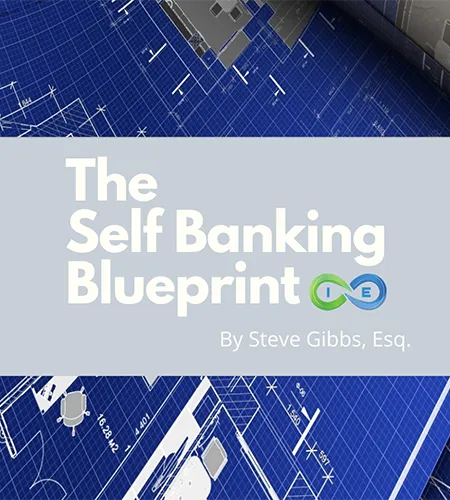💡 Key Insight
The best tax strategy isn’t necessarily the one that defers the most tax, but rather the one that maximizes your after-tax wealth while aligning with your risk tolerance, time horizon, and legacy goals.
Table of Contents
- Understanding Trusts
- What Is a Deferred Sales Trust?
- How DSTs Work: Step-by-Step Process
- Key Benefits of Deferred Sales Trusts
- Potential Drawbacks and Limitations
- Who Should Consider a Deferred Sales Trust?
- Alternative Tax Deferral Strategies
- Comparative Analysis: Which Strategy Is Best?
- Real-World Example: A DST Success Story
- Implementation Considerations
- Conclusion
When facing a significant capital gains tax bill from selling a highly appreciated asset, many high-net-worth individuals seek strategies to defer or reduce their tax burden. The Deferred Sales Trust (DST) has emerged as one potential solution among several options to lower taxes. This comprehensive guide looks at what DSTs are, how they work, their benefits and drawbacks, and how they compare to alternative strategies.
Understanding Trusts
Before diving into the specifics of Deferred Sales Trusts, it’s important to understand what a trust is fundamentally. A trust is a legal arrangement where one party (the trustor or grantor) gives another party (the trustee) the right to hold and manage assets for the benefit of a third party (the beneficiary).
Trusts create a fiduciary relationship, meaning the trustee must act in the best interests of the beneficiary according to the terms established in the trust document. Trusts serve many purposes, including:
- Asset protection
- Tax planning
- Estate planning
- Privacy
- Avoiding probate
- Controlling how and when assets are distributed
📋 Trust Types
Trusts can be revocable (can be changed or terminated by the grantor) or irrevocable (generally cannot be modified once established). Most tax-advantaged trusts, including those discussed in this article, are irrevocable.
What Is a Deferred Sales Trust?
A Deferred Sales Trust is a tax deferral strategy based on IRC Section 453, which governs installment sales. It allows sellers of highly appreciated assets, such as businesses, real estate, or investment portfolios, to defer capital gains taxes that would otherwise be due upon sale.
How DSTs Work: A Step-by-Step Process
- Trust Establishment: The process begins with a third-party company establishing a dedicated trust for your transaction.
- Sale to Trust: Instead of selling your asset directly to a buyer, you sell it to the DST in exchange for an installment note (typically over 10 years at a predetermined interest rate, often around 5%).
- Trust Sells Asset: The trust then sells the asset to the actual buyer at the same price.
- Tax Deferral: Because you haven’t received the full proceeds upfront but instead will receive payments over time via the installment note, you only pay capital gains taxes as you receive each payment from the trust.
- Reinvestment: The trust reinvests the sale proceeds according to agreed-upon parameters, with the goal of generating returns to fund your installment payments.
- Ongoing Payments: You receive regular payments from the trust according to the terms of your installment note, paying taxes only on the portion of each payment that represents your capital gain.
Key Benefits of Deferred Sales Trusts
Tax Deferral
The primary advantage of a DST is postponing your capital gains tax liability. Rather than paying a substantial tax bill immediately after sale, you spread the tax burden over many years. This allows more of your capital to remain invested and potentially growing.
Financial Flexibility
A DST provides considerable flexibility in structuring payments to align with your financial needs. You can customize payment amounts, frequency, and even delay the start of payments if you don’t need immediate cash flow.
Tax Rate Management
By spreading income over multiple years, you might keep more of your income in lower tax brackets, potentially reducing your effective tax rate compared to recognizing the entire gain in a single tax year.
1031 Exchange Alternative
Unlike a 1031 exchange, which requires reinvestment in “like-kind” property under tight deadlines, a DST allows for diversification of investments and doesn’t impose the same stringent timeline requirements.
🔄 Failed 1031 Exchange Rescue
If a planned 1031 exchange is at risk of failing due to inability to identify suitable replacement property within the required timeframe, a DST can potentially “rescue” the transaction and still preserve tax deferral benefits.
Potential Drawbacks and Limitations
Legal Considerations
The DST structure has faced increased IRS scrutiny in recent years, but recent analysis reveals even more serious structural risks that go beyond tax compliance issues.
🚨 Critical Legal Risks
Complete Loss of Control: To qualify for tax benefits, you cannot be the owner, trustee, or beneficiary of the DST. You surrender all control over your sale proceeds to a third-party trustee.
No Recourse for Losses: If the DST trustee mismanages your funds or makes poor investment decisions, you have zero legal recourse to recover those funds. Your money could simply be gone forever.
“Heads I Win, Tails You Lose”: Any excess funds after your note is paid off go to the trustee, not you. You bear all downside risk but get none of the upside beyond your fixed return.
Limited Transparency: According to financial planning experts, DST promoters often keep strategy details “closely under wraps,” limiting your ability to properly vet the arrangement.
The Risk Transfer Problem
DST promoters claim the strategy “eliminates credit risk,” but this is misleading. The risk isn’t eliminated—it’s transferred to a potentially more dangerous source. While traditional installment sales give you legal recourse if buyers default, DSTs leave you completely dependent on trustee competence with no fallback protection.
⚠️ What Experts Recommend Instead
Financial planning professionals increasingly suggest these alternatives:
- Structured Installment Sales: Use established insurance companies with significant assets backing payments
- Direct Buyer Sales: Traditional installment agreements with clear legal recourse
- Lump-Sum Sales: Pay taxes immediately but ensure you receive all proceeds
Read the complete legal analysis here for full details on these risks and alternatives.
Bottom Line: The same characteristic that makes DSTs work for taxes—complete loss of control—makes them potentially more risky than traditional installment sales. Consider whether potential tax savings justify extraordinary legal and financial risks with no recourse provisions.
Cost Structure
DSTs typically involve significant fees—approximately 2% of the transaction value upfront and roughly 1.5% annually. These expenses can substantially reduce the financial benefits of the tax deferral over time.
⚠️ Misaligned Incentives Warning
As a creditor of the trust rather than a beneficiary, you receive only your promised interest rate (e.g., 5%) regardless of how the trust’s investments perform. If the trust’s investments earn higher returns (say 10%), you don’t benefit from that additional growth. Conversely, if investments perform poorly, you still bear risk as a creditor.
Best for Shorter Time Horizons
Due to the misaligned incentives mentioned above, DSTs typically make the most sense for shorter investment timeframes (under 10 years) and more conservative investment approaches. The longer your time horizon, the more significant the potential opportunity cost of not capturing investment upside.
Who Should Consider a Deferred Sales Trust?
DSTs may be most appropriate for:
- Sellers who need tax deferral but plan to use the proceeds within a relatively short timeframe (under 10 years)
- Individuals comfortable with conservative investment approaches
- Those seeking an alternative to 1031 exchanges, especially when suitable replacement properties cannot be found
- Sellers willing to accept some legal uncertainty in exchange for tax deferral benefits
- Older individuals with shorter investment time horizons
Alternative Tax Deferral Strategies
When considering a DST, it’s crucial to evaluate alternative approaches that might better suit your specific circumstances:
Charitable Remainder Unitrust (CRUTs)
A Charitable Remainder Unitrust is another trust structure used for tax deferral, but with substantial differences from DSTs:
How CRUTs Work:
- You gift an appreciated asset to the CRUT before selling it
- The CRUT sells the asset tax-free (as a tax-exempt entity)
- You receive distributions from the trust over time (either for a term of years or for life)
- At the end of the trust term, the remaining assets go to your chosen charity
| Aspect | CRUT Advantages | CRUT Disadvantages |
|---|---|---|
| Legal Status | Statutorily established and IRS-approved | Requires charitable intent |
| Investment Returns | You benefit from full investment growth | A portion will go to charity |
| Income Duration | Potential for lifetime income | May not suit those needing all proceeds short-term |
| Tax Benefits | Charitable tax deduction for contribution portion | – |
| Long-term Performance | Better over longer time horizons due to compounding | – |
Qualified Opportunity Zones (QOZs)
Created by the 2017 Tax Cuts and Jobs Act, Opportunity Zones provide tax incentives for investing in designated economically-distressed communities:
How QOZs Work:
- Sell your appreciated asset
- Within 180 days, invest the capital gains into a Qualified Opportunity Fund (QOF)
- Defer tax on the original gain until December 31, 2026
- If you hold the QOF investment for 10+ years, all appreciation on the QOF investment is tax-free
| Aspect | QOZ Advantages | QOZ Disadvantages |
|---|---|---|
| Timing Flexibility | Can sell asset first, then decide to invest | Limited tax deferral period (only until 2026) |
| Tax Benefits | Complete tax elimination on new gains (after 10 years) | Less beneficial as 2026 deadline approaches |
| Investment Impact | Supports economic development in underserved communities | Requires investment in specific geographic areas |
| Risk Level | – | May involve higher risk investments |
Comparative Analysis: Which Strategy Is Best?
The optimal strategy depends significantly on your specific circumstances, including your time horizon, risk tolerance, and liquidity needs.
📊 Short Time Horizon Scenario (Under 10 Years)
For someone planning to use all proceeds within a decade and preferring conservative investments (6% annual growth):
- DST: Potentially highest after-tax value due to tax deferral benefits without the charitable component of a CRUT
- CRUT: Slightly lower returns due to the charitable remainder portion
- No Strategy: Pay taxes upfront, less capital to invest
- QOZ: Least beneficial for short-term needs since the main tax benefits require a 10-year hold
📈 Long Time Horizon Scenario (20+ Years)
For someone with a longer time horizon and typical market returns (10% annual growth):
- CRUT: Substantially outperforms due to tax-free compounding within the trust and full participation in investment upside
- No Strategy: Depending on specific circumstances, sometimes paying taxes and investing the remainder can outperform a DST over the long run
- DST: Limited to fixed interest return, missing substantial potential upside
- QOZ: Competitive only if the QOZ investments perform exceptionally well
Real-World Example: A DST Success Story
To illustrate how a Deferred Sales Trust can work in practice, consider the case of Dave, a baby boomer and long-term commercial real estate owner who had successfully closed hundreds of transactions throughout his career.
Dave owned a 128-unit apartment complex that he decided to sell for $7.6 million after managing it for many years. The property had a substantial mortgage of $4.5 million that would be paid off at closing, and Dave was facing a potential capital gains tax bill of approximately $1.1 million.
Initially, Dave planned to use a 1031 exchange to defer his taxes, and the funds were already sitting with a qualified intermediary. However, he faced a dilemma: he couldn’t find suitable replacement properties at reasonable valuations in the current market. More importantly, he didn’t want to take on millions in new debt at this stage in his life.
After consulting with his CPA, Dave decided to utilize a Deferred Sales Trust. This approach allowed him to:
- Defer the entire $1.1 million tax liability that would have been triggered if his 1031 exchange failed
- Avoid taking on new debt that would have been necessary with a 1031 exchange
- Create a steady income stream from the DST’s installment payments
- Gain flexibility to potentially invest in new properties later when market conditions improved, still using tax-deferred dollars
💰 Results
As a result of implementing the DST strategy, Dave was able to protect his equity, reduce his financial stress, and create more favorable investing conditions for himself in the future. The deferred taxes represented over 16% of his net proceeds from the sale, which could now continue working for him rather than being paid immediately to the IRS.
Implementation Considerations
If you’re considering a DST or alternative strategy, follow these steps:
- Detailed Analysis: Conduct a thorough analysis of your specific situation, comparing potential outcomes under different strategies and timeframes.
- Professional Guidance: Consult with tax attorneys, financial advisors, and CPAs experienced in these specialized structures.
- Documentation: If proceeding, ensure all necessary documents are properly prepared and executed, including the installment sale agreement, trust documents, and assignment of interest.
- Ongoing Management: Monitor the trust’s investments and ensure compliance with all legal requirements.
- Estate Planning Integration: Consider how the DST fits into your broader estate plan, potentially adding the DST to your living trust to ensure seamless transition to heirs.
Conclusion
The Deferred Sales Trust represents one option in the tax deferral toolkit for sellers of highly appreciated assets. While it offers potential benefits in specific scenarios, particularly for those with shorter time horizons, it’s important to carefully weigh the legal considerations, costs, and potential opportunity costs against alternative strategies.
For many sellers—especially those with longer time horizons—a Charitable Remainder Trust may offer superior benefits with greater legal certainty. Others might find that Qualified Opportunity Zones or even simply paying the taxes and reinvesting align better with their goals.
The key is to approach these decisions with comprehensive information, professional guidance, and a clear understanding of your financial objectives.
🎯 Final Takeaway
Remember: The best tax strategy isn’t necessarily the one that defers the most tax, but rather the one that maximizes your after-tax wealth while aligning with your risk tolerance, time horizon, and legacy goals.





